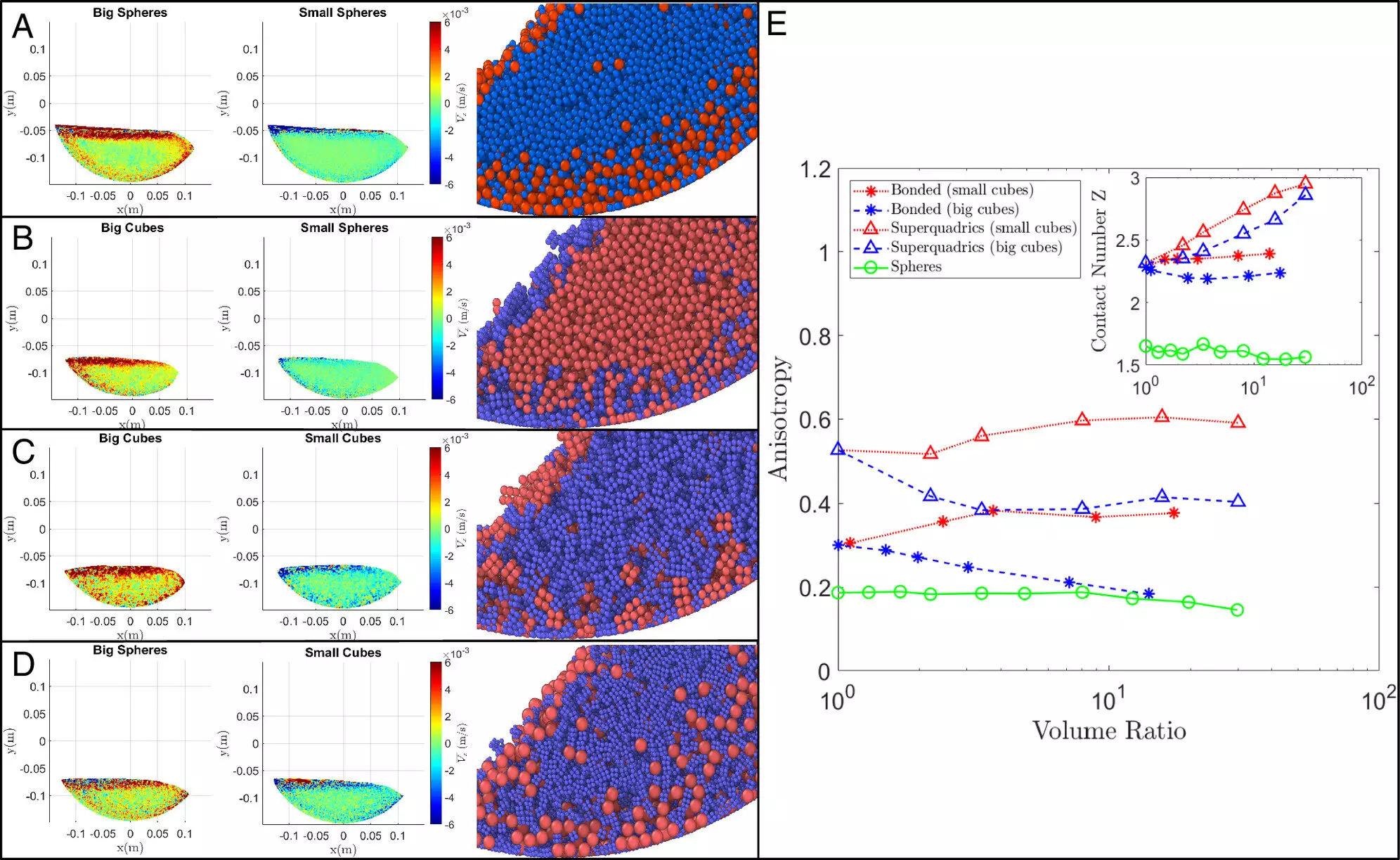Grain shape is playing a crucial but underestimated role in the behavior of granular systems, as discovered by researchers at the University of Rochester. In a recent publication in the Proceedings of the National Academy of Sciences, the team led by Rachel Glade, an assistant professor of Earth and environmental sciences and of mechanical engineering, along with Fernando David Cúñez and Div Patel, examined the effects of grain shape on the mixing behaviors of granular materials. Their findings shed light on the peculiarities of granular systems and highlight the importance of interdisciplinary research in understanding their dynamics.
Granular materials, such as cereal, pharmaceuticals, sand, and concrete, often exhibit a phenomenon known as the “Brazil Nut Effect.” This effect refers to the segregation of grains based on size rather than uniform mixing. For instance, in a jar of nuts, the largest nuts tend to rise to the top, resulting in a lack of uniformity. The Brazil Nut Effect has significant implications for industries such as food and medicine, as it hampers the desired homogeneity in mixtures. Moreover, in natural settings, grain segregation can influence geohazard dynamics, such as landslides, erosion, and debris flows. Despite its widespread occurrence, the mechanisms behind the Brazil Nut Effect have not been fully understood.
Previous studies primarily focused on the size of grains, assuming them to be spherical. However, Glade and her team recognized the need to investigate the impact of grain shape on segregation dynamics. Employing advanced computer simulations, they compared mixtures of spheres with mixtures of spheres and cubes in both dry and wet conditions. The researchers made notable observations regarding the influence of grain shape on segregation patterns.
In dry systems, the researchers discovered that even slight variations in grain shape have significant effects on segregation. The following trends emerged from their simulations:
1. Mixture of different-sized spheres: When the ratio between large-volume spheres and small-volume spheres is greater, segregation increases, resulting in more significant upward movement of the larger spheres.
2. Mixture of spheres of the same size plus larger cubes: The segregation patterns in this case remained similar to the spheres-only mixture, with the larger spheres rising to the top.
3. Mixture of spheres of the same size plus smaller cubes: Segregation decreased compared to the spheres-only mixture, although a considerable number of larger spheres still moved towards the top.
Interestingly, the effects of grain shape in dry systems differed from those observed in fluid systems.
In fluid systems, the dynamics of grain segregation were reversed. When examining mixtures of spheres of the same size plus smaller cubes, the smaller cubes moved to the top. This shift in patterns suggests that grain shape influences segregation quantitatively and qualitatively. By incorporating cubes into the mixtures, the degree and nature of segregation changed, altering the overall dynamics.
The research conducted by Glade and her team underscores the significance of grain shape in diverse domains, ranging from physics to engineering and Earth science. Understanding the influence of grain shape on granular systems has ramifications for industries struggling with the Brazil Nut Effect, as well as for geohazard prevention and mitigation efforts.
To further advance our knowledge, future research will investigate the underlying factors behind the observed changes in segregation due to grain shape. The researchers hypothesize that forces acting on the particles, causing them to adhere and resist movement differently, contribute to the variations in segregation patterns. By delving deeper into these mechanisms, a more comprehensive understanding of granular system dynamics can be achieved.
The study conducted at the University of Rochester offers valuable insights into the role of grain shape in granular systems. By uncovering the effects of grain shape on segregation patterns, the researchers have broadened our understanding of these complex systems. The findings emphasize the need for interdisciplinary research, bringing together experts from various fields to unravel the mysteries of granular materials. With further investigations, the knowledge gained from this study can be applied to diverse industries and geohazard management, ultimately improving the efficiency and safety of granular systems worldwide.


Leave a Reply